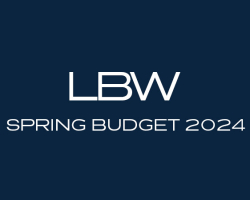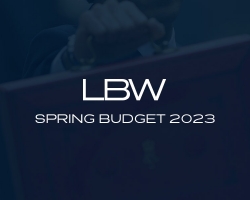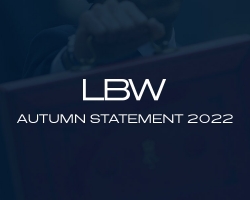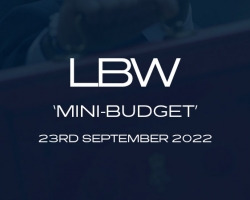LBW offer a full VAT service to clients and can help you and your business to plan towards meeting all of the necessary regulations that are in place. We can offer advice to point you towards the most beneficial record keeping systems in order to simplify the VAT process and minimise the amount of work completed by yourselves to meet HM Revenue & Customs record keeping legislation. Records should classify transactions into the current VAT rates - 20%, 5%, 0% and exempt from VAT. Flat rate schemes are useful to many clients.
VAT registration and de-registration limits are currently £85,000 & £83,000 respectively from 1 April 2017 (previously £83,000 & £81,000) - with turnover being pro-rated over the periods in question to establish if the registration threshold has been breached. LBW can monitor the turnover of your business and advise when it is necessary to register for VAT in order to avoid any unnecessary late registration penalties and also to forward plan with the view of all available VAT schemes on offer to you. We can also advise on when it is advantageous to fully deregister or to be removed from any VAT schemes in order to maximise potential benefits.
HM Revenue & Customs will also, from time to time, wish to carry out VAT investigations in to your VAT records and dealings. LBW can assist with any such investigations and for extra peace of mind we offer a fee protection service to alleviate the extra fee costs arising in the event of a VAT or tax investigation.
VAT Flat Rate Scheme
If your VAT taxable turnover is less than £150,000, you could simplify your VAT accounting by calculating your VAT payments as a percentage of your total VAT-inclusive turnover.
Although you cannot reclaim VAT on purchases - it is taken into account in calculating the flat rate percentage - the Flat Rate Scheme can reduce the time that you need to spend on accounting for and working out your VAT.
Even though you still need to show a VAT amount on each sales invoice, you don't need to record how much VAT you charge on every sale in your accounts. Nor do you need to record the VAT you pay on every purchase.
If you register for the Flat Rate Scheme in your first year of VAT registration, you can take advantage of a one per cent reduction in your flat rate percentage.
Whilst operating the Flat Rate Scheme for VAT, there are several checks that should be carried out to ensure that you remain eligible for the scheme. The main factor being that your annual gross turnover does not exceed £230,000. Should this limit be breached then you must leave the scheme from the end of the current VAT period. Once off the scheme you must remain off for a period of at least 12 months. LBW can provide assurance surrounding all of the elements of the Flat Rate Scheme to help you operate the scheme efficiently.
As a result of the Autumn Statement on 23 November 2016, the Chancellor of the Exchequer announced the introduction of a new 16.5% VAT flat rate for businesses with limited costs.
A limited cost trader will be defined as one whose VAT inclusive expenditure on goods is either:
- Less than 2% of their VAT inclusive turnover in a prescribed accounting period.
- Greater than 2% of their VAT inclusive turnover but less than £1,000 per annum if the prescribed accounting period is one year (if it is not one year, the figure is the relevant proportion of £1,000).
- Capital expenditure.
- Food or drink for consumption by the flat rate business or its employees.
- Vehicles, vehicle parts and fuel (except where the business is one that carries out transport services - for example a taxi business - and uses its own or a leased vehicle to carry out those services).
Goods, for the purposes of this measure, must be used exclusively for the purpose of the business but exclude the following items:
- Capital expenditure.
- Food or drink for consumption by the flat rate business or its employees.
- Vehicles, vehicle parts and fuel (except where the business is one that carries out transport services - for example a taxi business - and uses its own or a leased vehicle to carry out those services).
Full HMRC legislation can be found here.






